Ornamental grasses are sometimes overlooked as a way to add interest, vertical texture, and romance to all types of gardens. From tall and bold to low-growing, light, and airy, there are many different types of grasses you can grow.
Most ornamental grasses have very tiny seeds that easily blow away in the wind after dropping from the plant. Starting these seeds indoors is more conducive to structured gardening.
I’ve compiled a list of 17 ornamental grasses you can grow from seed, including both annuals and perennials. Let’s get started.
Blue Fescue
This grass is extremely hardy and subsists just about anywhere. A fast-growing perennial, blue fescue does well in containers and along borders and rock walls. It’s quite attractive for a low-growing grass, complementing colorful annual flowers well. Mulch them with contrasting woodchips to make them pop.
Blue fescue has an interesting, silvery blue tinge to its green blades. Native to Europe, it grows best in spring and fall when temperatures aren’t too hot. It goes dormant in summer and winter when temperatures aren’t ideal. ‘Elijah Blue’ is a clumping variety that holds up well in peak summer heat.
Start blue fescue ornamental grass from seed in late winter indoors in pots or by spreading seeds directly in prepared areas. Seeds need light to germinate, so press the seeds into the soil, but don’t cover them. Germination rates are best at 65-75°F (18-24°C) and the entire process can take up to 30 days, depending on the variety. Place it in an area with well-draining soil, and once your patch is established, divide clumps every 3-5 years for best results. Cut back or rake foliage in late fall.
Virginia Wild Rye
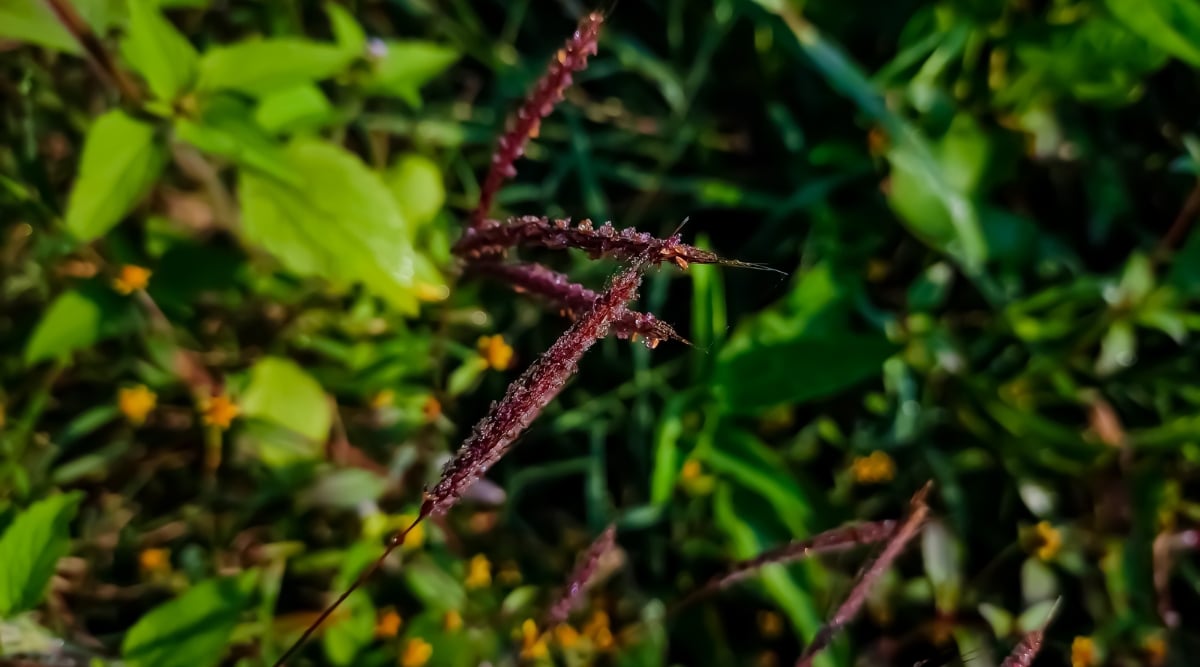
This bright green grass attracts a wide variety of birds and butterflies and grows well in most soils. It is moist-tolerant and deer-resistant. Virginia wild rye blooms a wheat-like structure in late summer that can be added as a bouquet accent.
Sow these ornamental grass seeds ¼ inch deep in pots or cell trays, using heat mats if needed to keep them around 65-70°F (18-21°C). Start seeds indoors four weeks before nighttime temperatures are above 50° (10°C). Harden off seedlings and transplant them when they are two to three inches tall. Space them at least one foot apart for best success.
Seeds can be sown outdoors at the same depth in late fall or early spring. Established plants will re-seed easily.
Fountaingrass
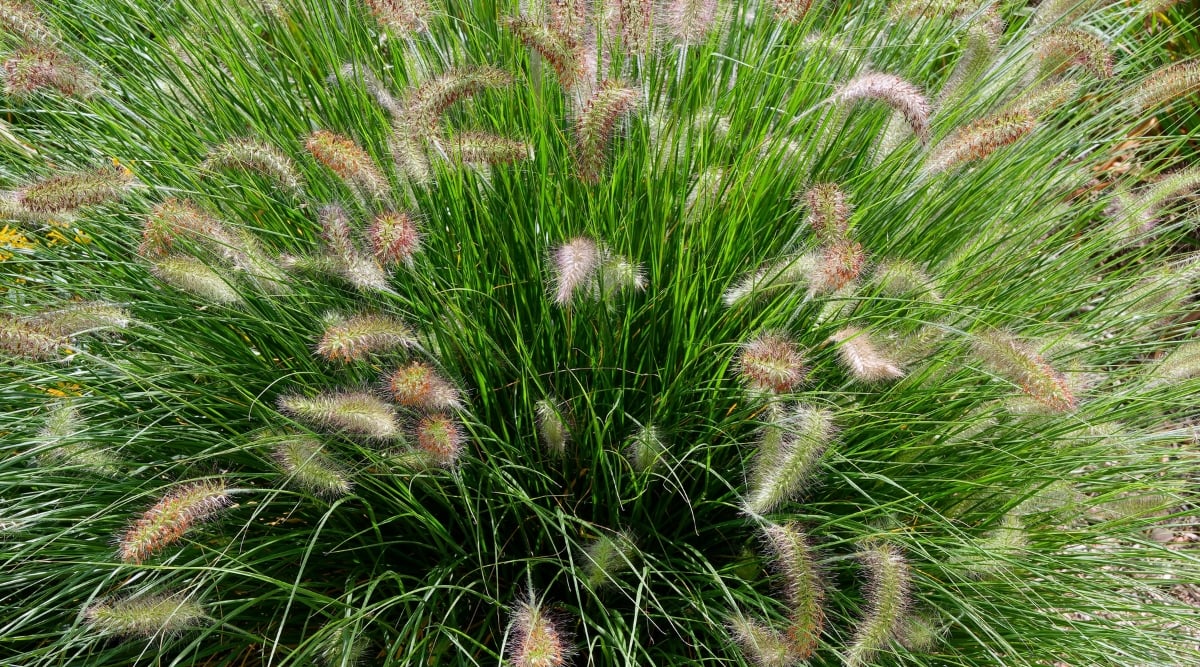
This is a fun, low-growing grass that should be grown in areas with tropical or subtropical climates, similar to their native Africa and Asia. Otherwise, the grass can become difficult to control and may be considered invasive. Try ‘Red Head Fountain Grass’ for a stunning, early-bloomer.
Fountaingrass features fluffy plumes atop slender, draping foliage. Different varieties bloom white, pink, or red flowers in summer or fall. Add them to a woodland or cottage garden or along a walking path. Giving them a few feet on either side increases airflow and reduces the risk of fungal diseases.
Use the milk-jug winter sowing method or direct sow in early spring. Lightly cover and keep cell trays moist. Seeds should germinate in two to three weeks. Wait until the root system is strong and the risk of frost has passed to transplant. Allow plants to establish before the winter. Mulch them to protect the roots, retain moisture, and keep weed pressure down. Split in future years to share or add new plants to another part of your garden.
Big Bluestem

Big Bluestem’s foliage transitions from blue-green in summer to bronzey red in fall, making it a conversation starter all year long. Native to the Midwest, it’s a warm-season grass that peaks in the heat of summer, growing up to five feet tall. In late summer, look for its unique “turkey foot” seed head. It’s drought-resistant once established and grows in most soil types.
This ornamental grass self-seeds easily and spreads underground by fibrous roots, so plant it in rows, borders, or in a prairie garden where it can spread out. Full sun allows it to perform and look its best. Remove unwanted seedlings in spring.
Start seeds indoors in spring on heat with access to light. Barely cover seeds and water them from below. Step them up into larger pots when they reach two inches in groups of 3-4 or 6-10, depending on the size of clumps you want to feature in your garden. Transplant after hardening them off and the risk of frost has passed.
Indiangrass
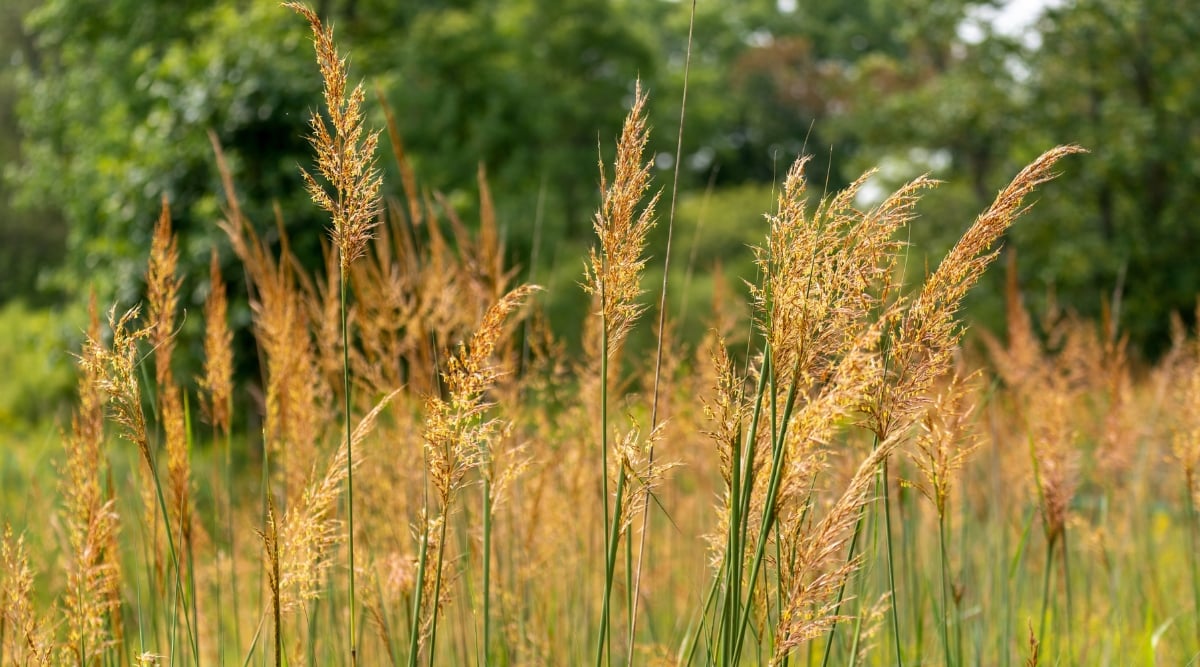
Indiangrass is a good option if you have a large amount of space to cover, as it seeds aggressively. It serves as a host plant for butterflies and local game birds. Large stands act as bedding and cover for white-tailed deer, and native bees use the foliage as nesting material.
Extremely drought-resistant, Indiangrass grows best in sandy soils and at the bottom of prairie hills, found most often in the western half of the United States. Pair it with prairie flowers or other grasses. Lovely golden seed heads form in fall.
Collect seeds in the fall and store them in a cool, dry place until sowing in spring. Sow ¼ inch deep and grow in the greenhouse in pots or cell trays until they’re over two inches. Harden them off for at least two weeks and transplant them once they have a healthy, fibrous root.
Blue Oat Grass
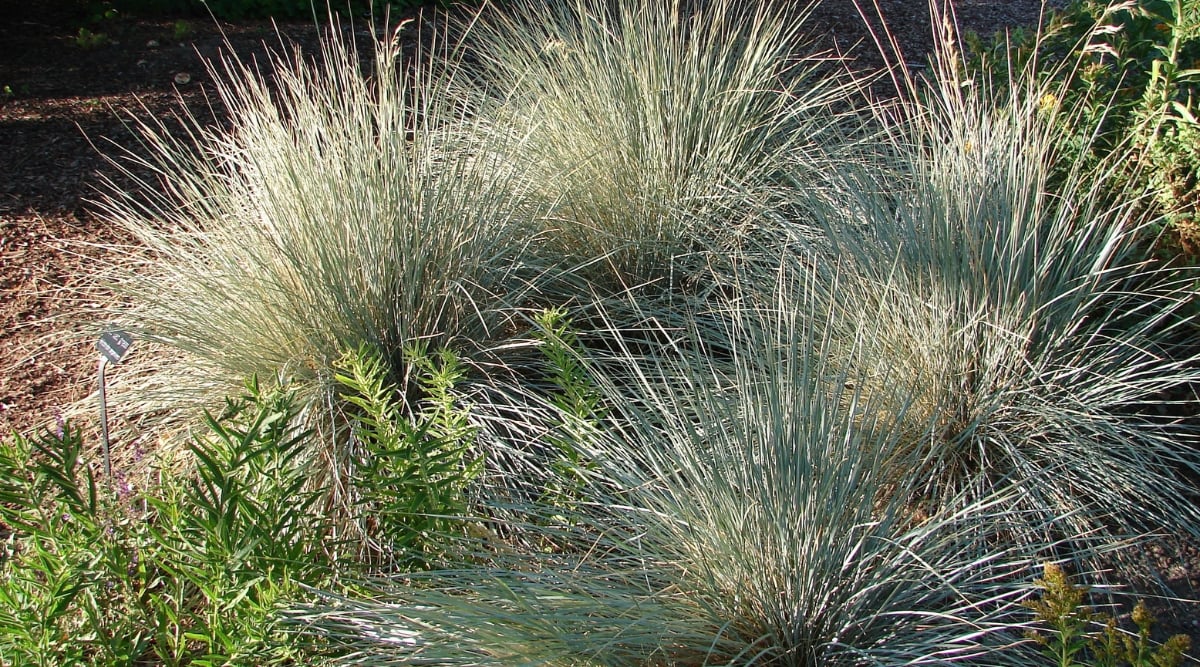
This mounding, clump-forming grass thrives in cooler weather and provides a unique steel blue shade to gardens. Pair it with Russian sage, bright blue annual flowers, or plant it along borders.
Fertilizer should only be necessary if planted in a container, no serious pests or diseases are known, and overall, it’s low-maintenance. Foliage should remain blue-green through mild winters. Otherwise, trim it back to one inch when it goes dormant in winter and rake out the trimmings.
Dividing blue oat grass is the most popular way to propagate, but winter sowing is a great option when starting this ornamental grass from seed. Germination rates should be higher in spring when seeds are sown in well-draining soil in fall.
Alternatively, sow them in pots and leave them in an unheated area or a cold frame all winter. Transplant them in spring after the risk of frost has passed. Give plants about two feet of space for their textured foliage to spread out and reduce the risk of rust fungus during humid conditions.
Switchgrass
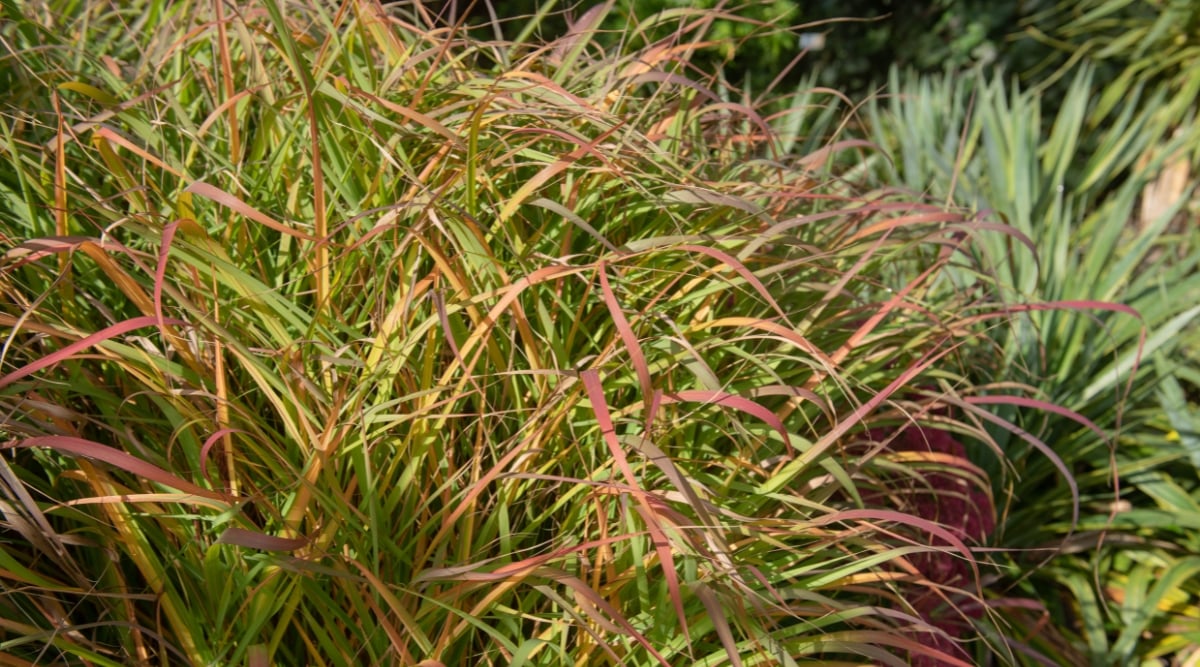
This tall, whimsical grass is not only lovely, but it serves as a host plant and food source for important butterflies, moths, and native birds. Although it performs fine in poor and sandy soils, switchgrass remains shorter. It grows to be six feet tall in fertile and clay soils. If you prefer a shorter version, try ‘Shenandoah’, which grows just two to three feet tall.
The lacey tops and wispy blades turn a shade of golden in fall but hold up well through the winter. It’s a great option for sloped or wet areas to help erosion due to its deep, fibrous root systems. Keep the area weed-free as you allow slow-growing switchgrass to become established.
Switchgrass needs a period of cold stratification, so sow it outdoors in fall for the best germination rates. Otherwise, you can freeze it during the winter months and sow it in spring. Sow directly once soil temperatures are above 55°F (13°C) or indoors in light and with added heat.
Seedlings will be ready to transplant in a few short weeks. For a full stand of switchgrass, sow 5 pounds per acre or 2 ounces per 1000 square feet. Drilling gives you the best seed-to-soil contact and improves germination rates.
Tufted Hairgrass
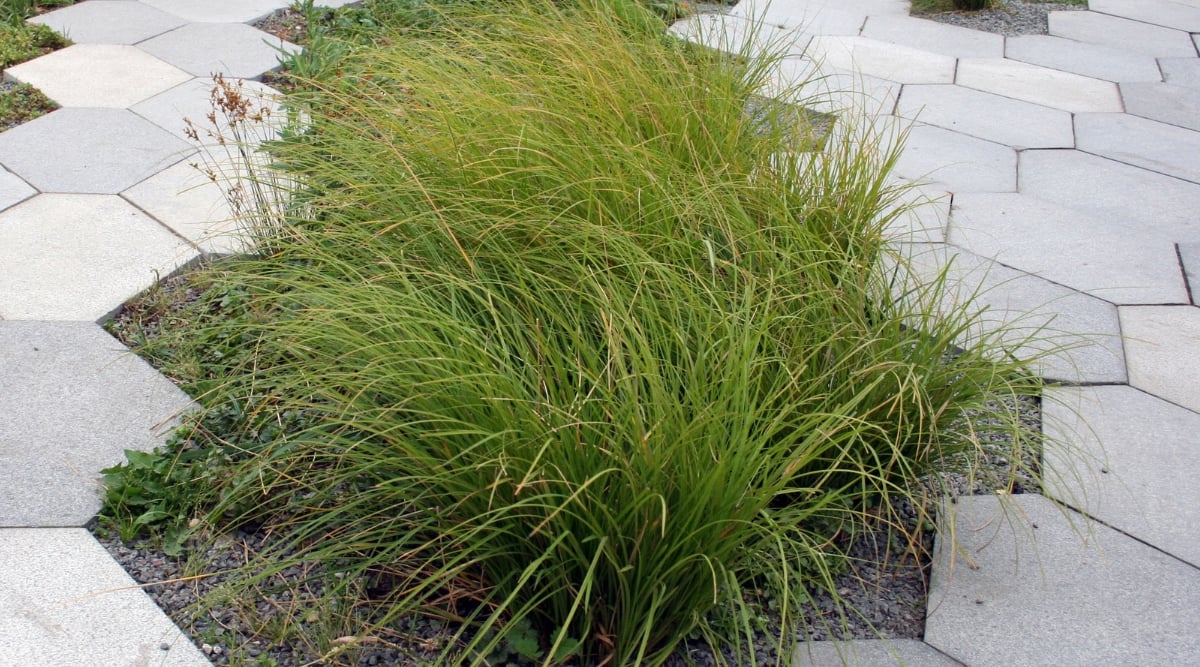
This robust grass loves cool weather and features a blue-green mounding habit of hair-like tufts, just as the name suggests. Light and airy panicles form in the summer, offering greenish-purple florets that transition to tan as they mature.
Tufted hair grass prefers moist, marshy growing areas with rich soil, forming clumps. It serves as a host plant for important butterflies and moths, provides cover for small animals in wetlands, and its seeds provide food for birds. It’s an endangered plant in parts of the US, so add some to your lineup to help your local environment.
Sow these ornamental grass seeds in prepared garden beds in early spring and lightly rake in or sow shallowly in cell trays. Transplant when root systems are strong and can withstand prolonged wet weather. Deadhead and cut back in fall, including seed heads, if you don’t want self-seeding to occur. Otherwise, it remains attractive during the winter months. Tufted hair grass can live for many years with little maintenance. Just ensure its access to shade for best success.
Vanilla Grass
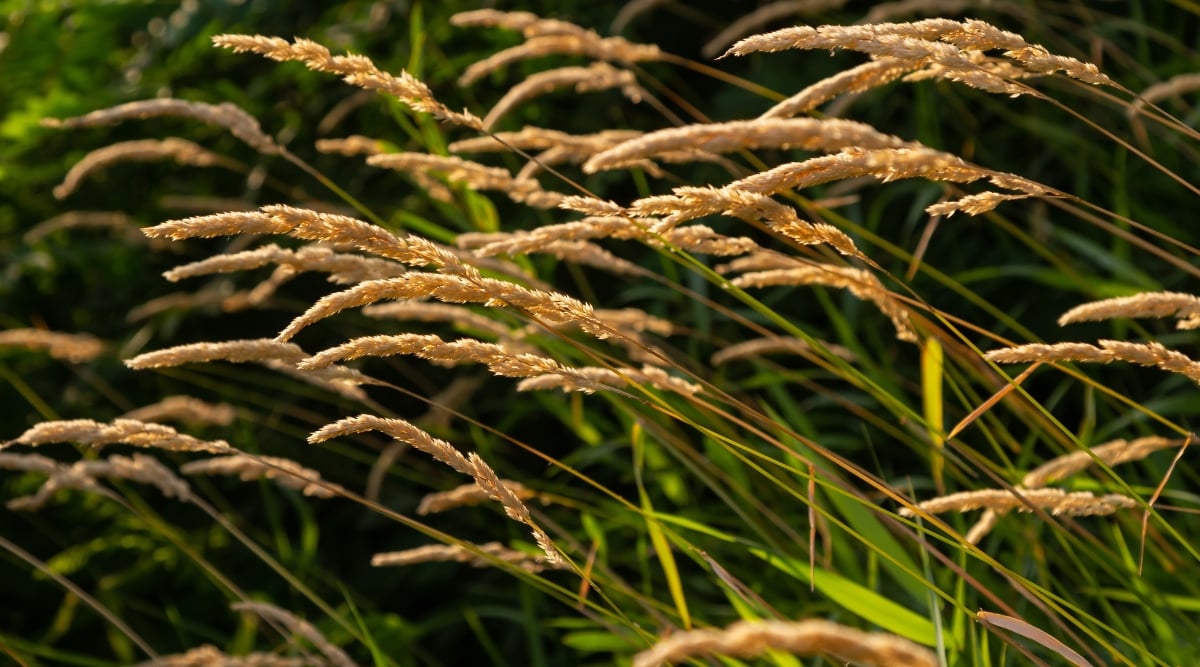
Named for its captivating vanilla scent, vanilla grass is also called sweetgrass, and it’s a perennial heirloom that is tricky to germinate but is hardy once well-established.
Vanilla grass is evergreen and is often grown in containers due to its potentially aggressive nature. Don’t allow the seeds to spread in the fall to avoid volunteer seedlings in spring.
Sow indoors in moist and well-draining soil six to eight weeks before your last frost. Do not let the seeds dry out. They should germinate within two weeks. Direct sow seeds outside in spring, but since germination rates are naturally low, sowing indoors is recommended.
Millet
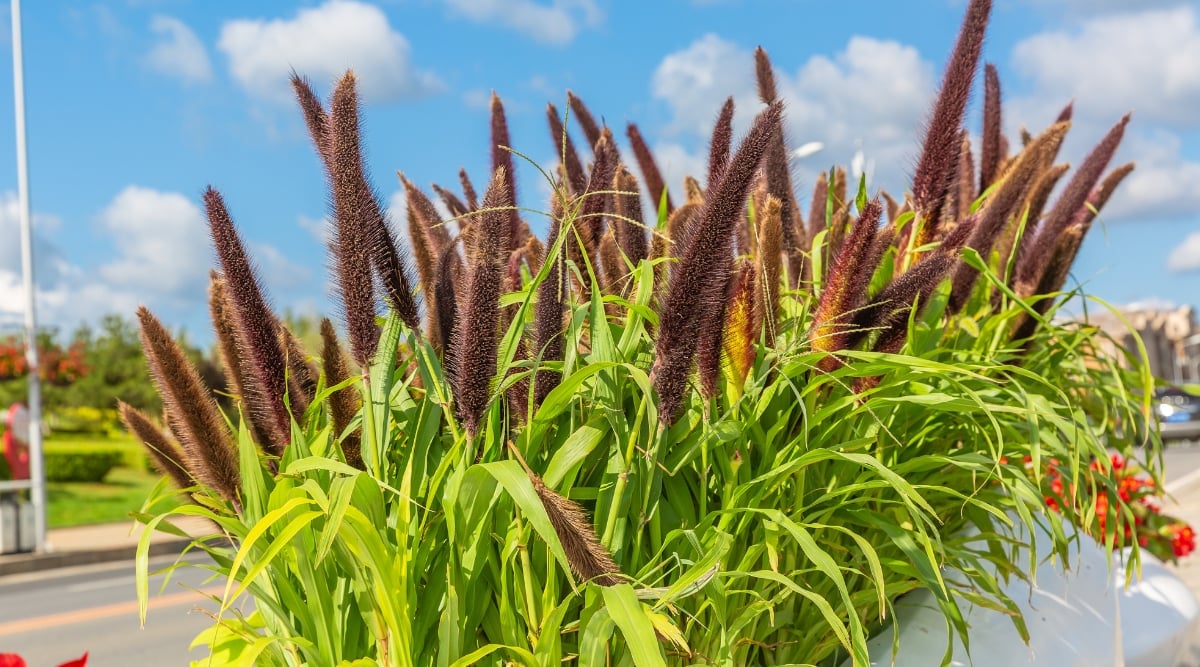
The original ornamental millet ‘Purple Majesty’ was developed at the University of Nebraska and has gained popularity since it won the All-America Selections Gold Medal in 2003. Try ‘Jade Princess’ for a compact option that has contrasting green, fountain-like foliage.
Young cattail-like spikes can be harvested and added to wild bouquets, while seeds provide food to many species of birds. Pair dark purple cultivars with the striking orange of calendula or zinnias. Mix in a variety of heights and textures to make a real statement.
Start seeds indoors in spring for the best chance at fully mature and tall stalks. Germination occurs within just a few days on a heat mat between 72-78°F (22-26°C) and should not be transplanted until the soil is warm.
Rootbound seedlings will not grow properly or will be stunted, so don’t start seeds too early. Millet originates in tropical areas. It grows best when temperatures are between 91-95°F (32-35°C). You can direct sow, but growth won’t be as impressive, especially where summers are mild. Dropped seeds will not survive freezing.
Greater Quaking Grass
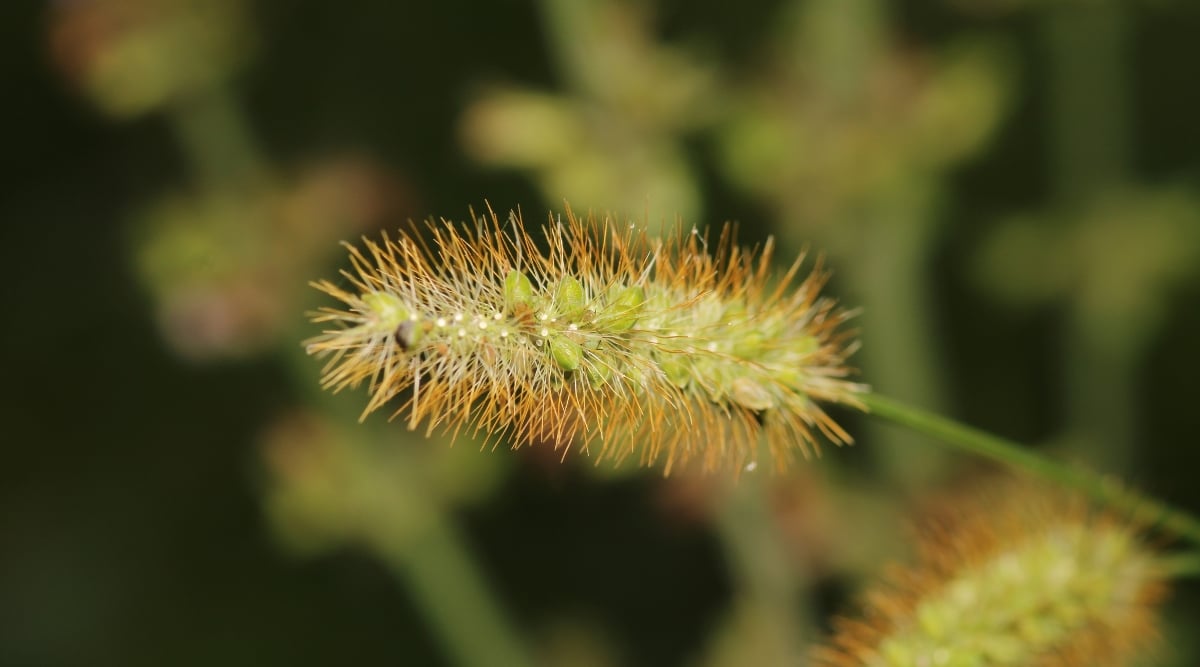
This interesting grass features ½ – 1-inch seedheads on thin, whimsical stems that transition from green to golden when left on the plant to dry. When harvested fresh and added to a bouquet, the seemingly dancing or quaking seedheads make it seem carefree and fun.
Rattlesnake grass, as it’s sometimes referred to, is perfect for cottage gardens, wild gardens, meadows, or in mass alongside colorful annuals like zinnias, cosmos, or salvia. The plants are deer and drought-resistant. Harvest seeds when they’re still green before pollen is shed and they shatter.
Start these ornamental grass seeds indoors five to seven weeks before transplanting in late spring. Sow them ⅛ inch deep into 72-cell trays. Transplant them out to a well-draining area at 9-12 inches after the risk of frost has passed.
Fiber Optic Grass
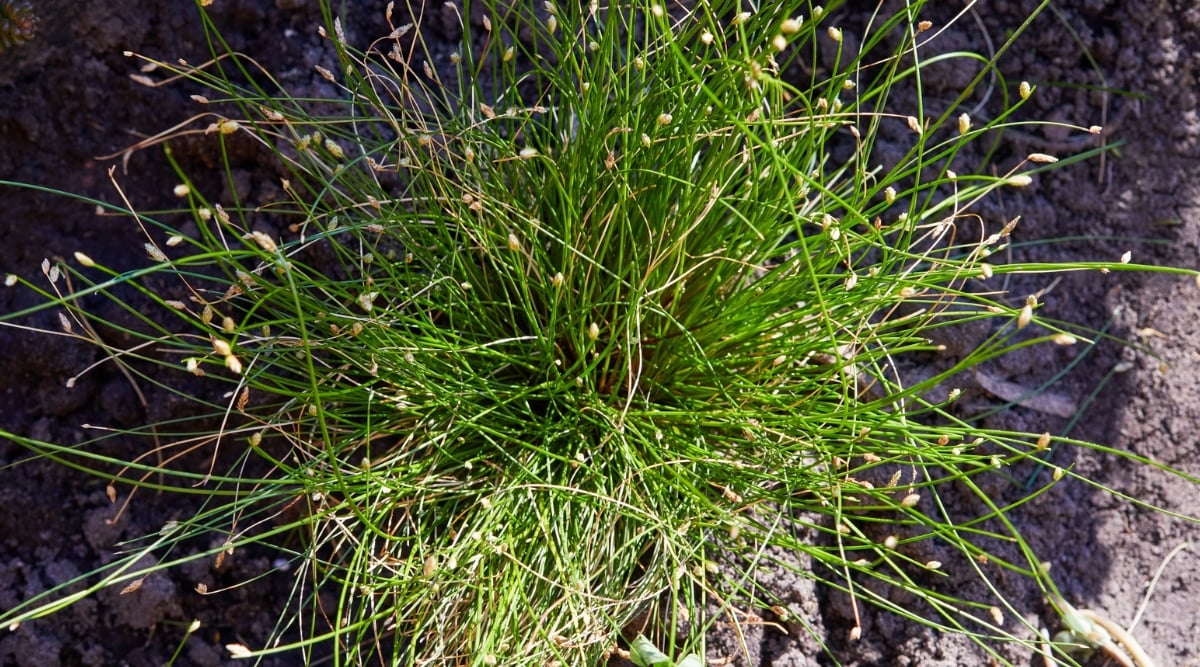
This grass is named as such due to its resemblance to the fiber optic nightlights from the 90s that glowed in ever-changing colors. The centers spike upwards but spill over, creating a full mop-head look. This tender sedge has fine, low-growing, blueish-green blades with a mounding habit featuring a small, silvery flower on the tips of each.
Compact enough for containers and displayed on patios, it also adds unusual textural flair spaced between bright, cutting gardens. Plant it near a pond or add it to a fairy garden.
Start seeds in small pots in spring using a moist seed starting mix and barely cover. Use a humidity dome to retain moisture until germination. Step up into larger pots as needed for the entire first season, transplanting it out the following spring after the risk of frost has passed to its permanent garden place. Bring plants indoors or keep them warm over the winter months.
Savannah Grass
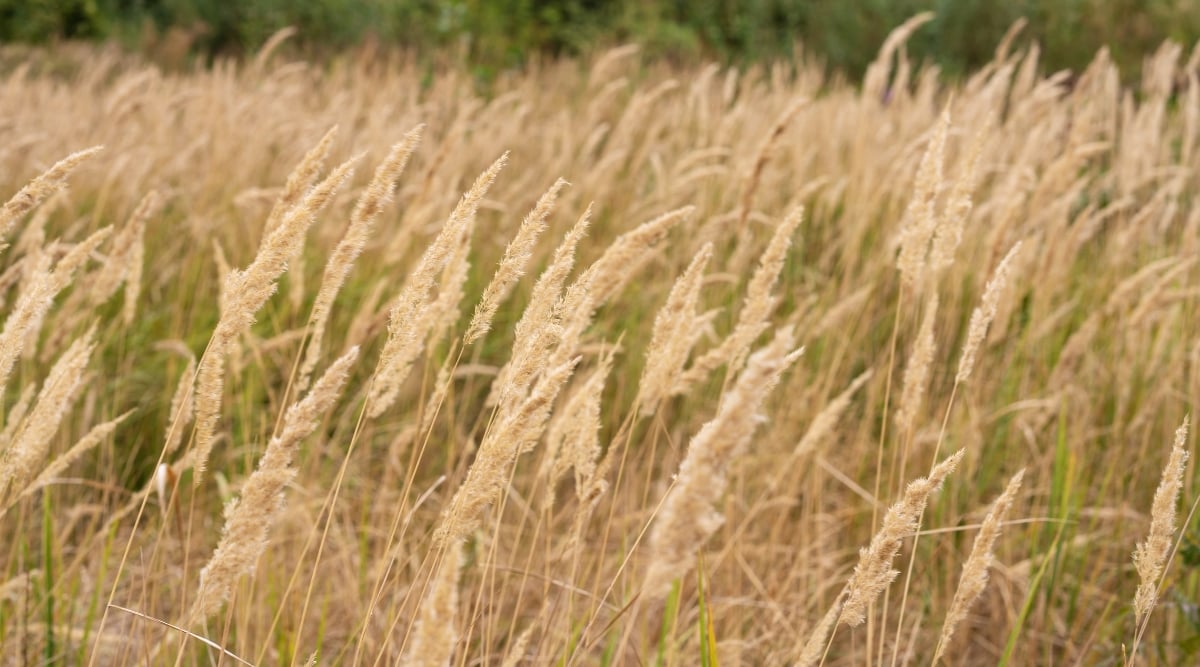
Savannah grass matures in 100-120 days, perfect for late-season arrangements. It features slender green stems and sparkly, dusty rose-gold panicles.
Plant this ornamental in mass along a border for a romantic vibe, in the center of large containers, or to add charm to a cutting garden. The blades at the base tend to mound, whereas the stems stand erect from the center, making them easy to harvest.
Start this tender perennial each season from fresh seeds sown in 72-cell trays and given plenty of light to germinate. Germination may take up to three weeks at 70-75°F (21-23°C). Transplant after the risk of frost has passed. Space them at 9-12 inches.
Black Tip Wheat
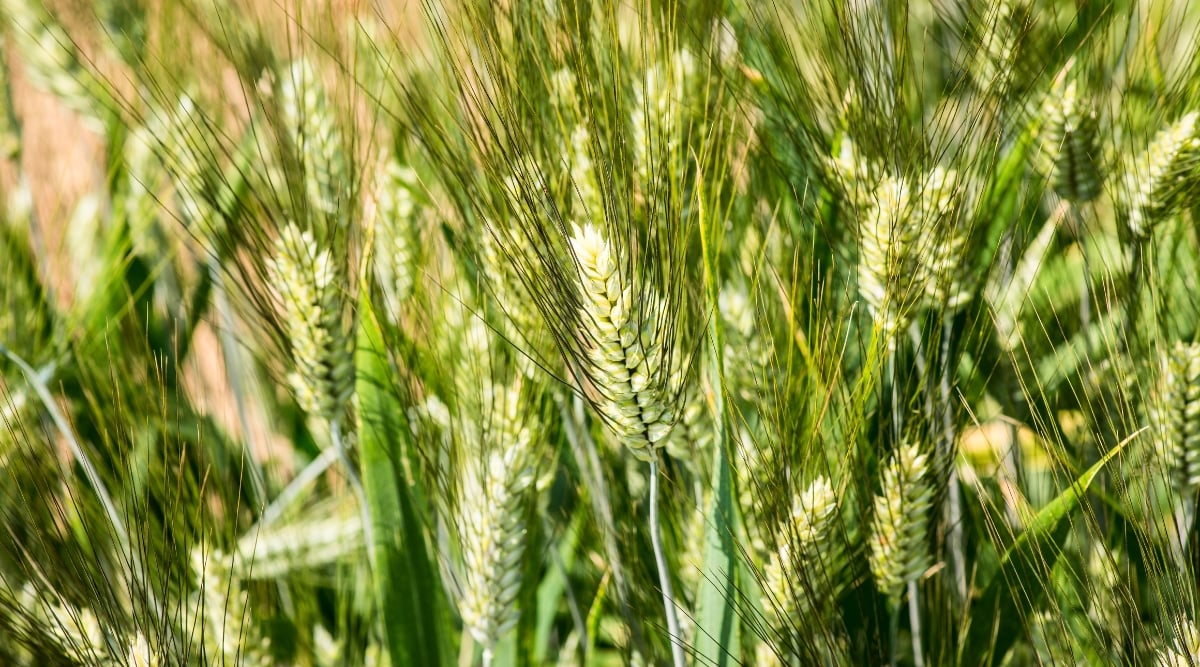
This will fancy up a summer or fall bouquet instantly. Also called durum wheat, it has unique buff kernels and long, distinctively purplish-black awns, which add textural interest.
Plant this wheat with other summer-blooming annuals; it matures in about 80 days. Collect dried seed pods in fall to save for next season.
Direct sowing four weeks before the last frost date is recommended. Leave about two inches in between plants and sow them at ¼ inch, then cover. Press the soil down to provide good seed-to-soil contact and water them in. They should germinate in 5-10 days. When newly seeded, durum wheat can handle some light frost.
Frosted Explosion
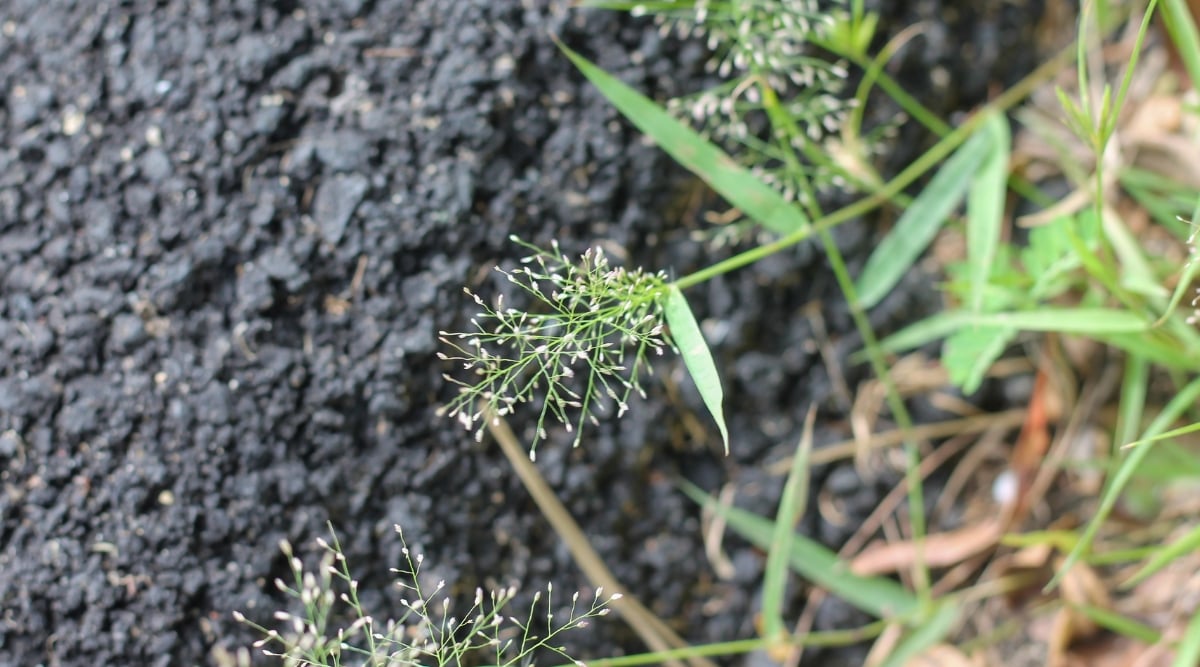
Frosted explosion adds a light and romantic feel to any summer bouquet. Featuring airy tufts alongside tall, corn-like blades, it’s low-maintenance and prolific.
Moist and well-draining soil is preferred. Space plants at about six inches. Water during dry spells to keep the blades from browning. Continuous harvests and deadheading keep fresh tufts coming all season.
Start seeds indoors and barely cover them as light aids in germination. Start the process about five to six weeks before transplanting. Temperatures of 60-65°F (16-18°C) assist in germination, which takes about two weeks.
Pro tip: Newly germinated, frosted explosion resembles grass and may be mistaken for weed seeds, so be sure to mark your patch. This is also why direct sowing is not recommended.
Feathertop
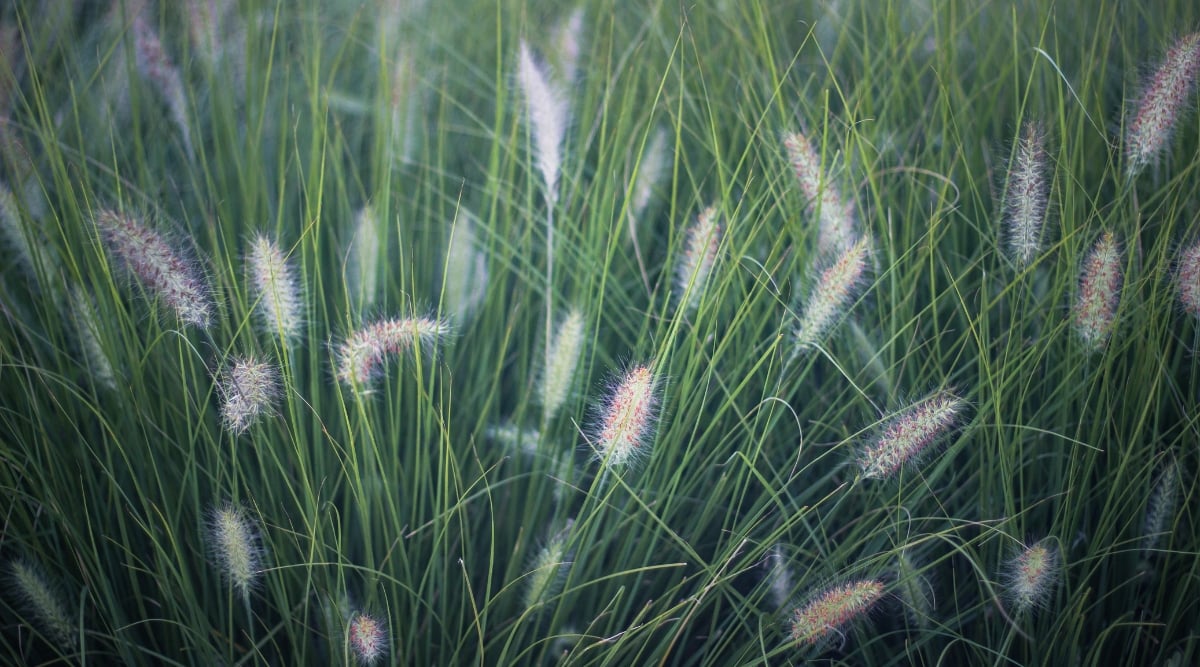
This fun and fluffy grass has been saved for last for a reason; it’s my favorite! I always grow a small patch and add one to every bouquet as our small farm’s signature. Add them to the center of containers, along a cottage garden border, or in mass in a fresh-cut flower garden.
Feathertop is best started fresh from seed each season. Leave the tufts to dry on the plant and harvest them in late summer to save the seeds.
Sow seeds indoors 5-7 weeks before your last frost. Sprinkle them into strip trays or 128-cell trays and just barely cover them with vermiculite. Seeds should germinate in about two weeks when put on a heat mat set to 65-70°F (18-21°C). Transplant them into a well-aerated area in full sun when the soil has warmed, and the risk of frost has passed. Keep them deadheaded for fresh and continuous blooms.
Final Thoughts
With lots of annual and perennial options, ornamental grasses add height, texture, and visual interest to all types of gardens. Whether you’re starting seeds for the first time or are an avid gardener, there is something for all levels of expertise. I hope you found something you’re looking forward to trying this season.



